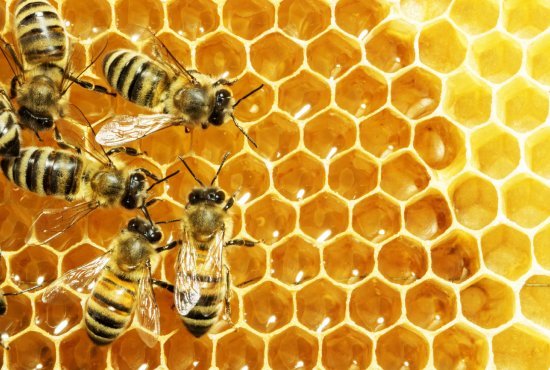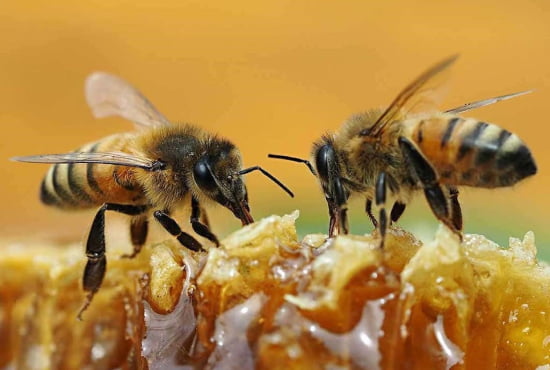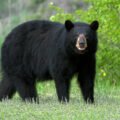Honey bee habitat
A honey bee (Apis) is one of the most commonly known and easily recognizable insects in the world, primarily due to its iconic appearance. The honey bee gets its name from the fact that it’s the primary pollinator of honeycombs, which are built by worker bees and used to store excess nectar, pollen, and honey for future use. When it comes to getting buzzed about pollination, there’s no higher praise than having fellow insects refer to you as the queen of all bees! So, what makes this particular species so special?
Honey bees live in colonies inside hives. In temperate regions of North America and Europe, honey bees’ nest from spring to fall as soon as flowers begin to bloom. Northern winters are too cold for bees to stay active during that time of year. They remain inactive until warmer weather returns in spring. This makes winter their prime time for rest and regeneration. The hive’s interior is kept at a steady temperature of 91°F with an optimum humidity level of 50%. This is optimal for germination, growth, and development of pollen balls which are food stores for worker bees when hibernation occurs each winter season.

Polyandry
When a female honey bee has more than one mate in her life. This is unusual for animals and insects in general; however, it is quite common among honey bees. Polyandry allows a mated queen to increase her reproductive success because she rears more of her children, on average. The first male she mates with guards her from other males until she emerges from his hive after spending 24 hours as an adult inside his chamber. When he opens up his chamber to release her back into nature, she chooses whether or not to fly away and mate again based on how good of a father he was.
The importance of honey bees
The honey bee is an amazing insect. For one thing, it has been with us since before humans existed. It is believed that bees have been around for about 50 to 100 million years. There are also over 4,000 different species of bee in existence today and they can be found on every continent except Antarctica. The bee performs many valuable tasks for humans and animals alike; including producing honey and pollinating flowers which help to feed our planet’s food supply.

Physical Characteristics
Honey bees are social insects that are characterized by a hairy and soft body with six legs. They have compound eyes which consist of thousands of lenses and enable them to see in many directions at once. These eyes also include two large ocelli which help them find their way back to their hives. Honey bees also have several glands that produce royal jelly and other secretions that protect them from diseases.
Their stinger is a modified ovipositor and can be used only once before its death; however, they have barbs on their surface that make it difficult for humans to remove. The honey bee has three main castes: queen, drone, and worker which share similar physical characteristics but have very different responsibilities within their colony.
Life Cycle
The average lifespan of a honey bee is around 6 weeks during the summer months and up to several months in colder climates. Honey bees are born out of unfertilized eggs, which means they do not have fathers. Females lay unfertilized eggs in their first year then fertilized eggs in their second year. Unlike other animals whose mothers nurse them from birth until leaving home as adults, new honey bee larvae are left on their own to find food for themselves for about 3 days before workers begin feeding them with regurgitated nectar and pollen.

Incredible Facts
Honey bees live in colonies in hives.
They are social insects and communicate with each other through various dance moves.
Each dance move has a specific meaning such as we have found food, there is an intruder or there is not enough pollen.
By performing a certain dance move at just the right time, they can build a hive together that can house over 40,000 bees.
They also make honey from nectar which acts as their food supply for wintertime when nectar isn’t available.
Their hard work allows them to create excess honey which we then harvest for our use in sweets like cookies or cakes.

